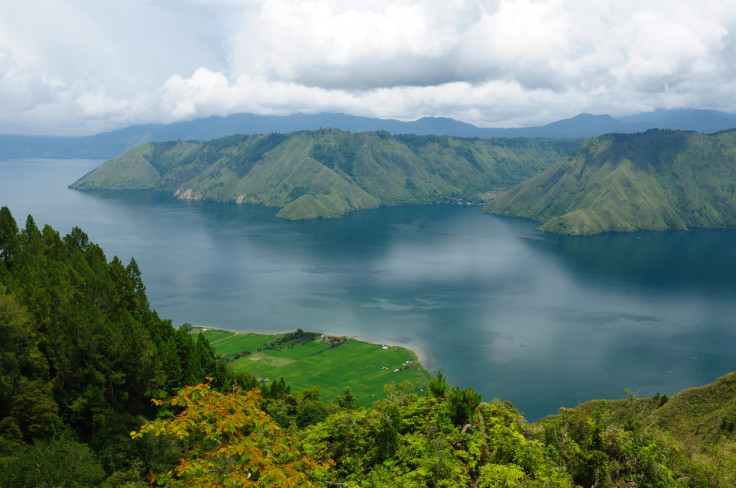This is what triggered the biggest supervolcano eruption in history
Quartz crystals at Lake Toba reveal change in magmatic system just before eruption.

Lake Toba is one of the world's biggest supervolcanoes, and an eruption there 74,000 years ago saw 2,800km3 of material ejected into thr atmosphere. Scientists have now discovered what triggered this Earth-altering eruption after finding clues inside tiny quartz crystals inside the volcano.
Supervolcanoes are generally considered to be volcanoes that can eject more than 1,000km3 of material during an eruption – around 1,000 times more than a regular volcano. After the eruption at Toba, global temperatures plummeted for a decade, covering huge areas of Indonesia and India in ash.
Researchers from Sweden's Uppsala University have now looked more closely at the eruption and found indications of a significant change in its magmatic system just before it blew.
Publishing their findings in the journal Scientific Reports, the researchers analysed millimetre-sized crystals from within the volcanic ash and rock.
David Budd, one of the study authors, explained: "Quartz crystals that grow in the magma register chemical and thermodynamical changes in the magmatic system prior to eruption, similar to how tree rings record climate variations. When the conditions in the magma change, the crystals respond and produce distinct growth zones that record these changes.
"The problem is that each 'tree ring'-analogue is only a few micrometers across, which is why they are extremely challenging to analyse in detail."

Their findings showed a significant shift in the isotopic composition towards the outer rims of the crystal, indicating that "something in the magmatic system changed drastically just before the big eruption", Budd said.
The crystal rims have a lower proportion of the heavy isotope 18O in comparison with the lighter 16O type. Frances Deegan, another co-author of the study, said: "The explanation behind these chemical signatures is that the magma melted and assimilated a large volume of a local rock that itself is characterised by a relatively low ratio of 18O to 16O.

"This rock type also often contains a lot of water, which may be released into the magma, producing steam, and thereby an increased gas pressure inside the magma chamber. This rapidly increased gas pressure eventually allowed the magma to rupture the overlying crust, and send thousands of cubic kilometres of magma into the atmosphere."
Toba is not expected to erupt again for thousands of years, but when it does, scientists expect it would be a supereruption. A model of the volcano shows a magma reservoir is currently growing – showing that it is still active.
Valentin Troll, who led the study, said: Biologists have previously shown that this particular eruption at Toba pushed humanity close to extinction. It will hopefully take many thousands of years, but the fact is it is only a matter of time before the next super eruption, maybe at Toba, Yellowstone [US] or somewhere else. Hopefully, we will know more and be better prepared next time."
© Copyright IBTimes 2025. All rights reserved.






















